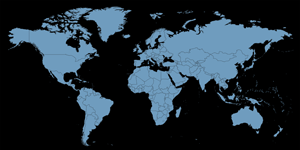Global Issues


China
• China missing an estimated 40.9 – 50 million women due to preference for male children.
• Gender-imbalance (118.08 males for every 100 females according to the 2010 census), which in turn fuels trafficking and prostitution.
• China’s 4-10 million sex workers remain a particularly vulnerable segment of the population due to the government’s harsh policies and regular mobilization campaigns to crack down on prostitution.
• Source, transit, and destination country for men, women, and children subjected to forced labor and sex trafficking.
• Women and children from neighboring countries including Burma, Vietnam, Laos, Mongolia, Russia, and North Korea, and from locations as far as Romania and Zimbabwe are reportedly trafficked to China for commercial sexual exploitation and forced labor.
• Chinese men, women, and children may be subjected to conditions of sex trafficking and forced labor in numerous countries and territories worldwide.
• Police in Dongguan, Guandong Province, forced arrested women in prostitution to parade in the streets barefoot and handcuffed and published their photos on the Internet.
• 15.4% of women in China report intimate partner physical violence in their lifetime.
• 2008 survey by the All-China Women’s Federation (ACWF) found domestic violence affected one-third of China’s 267 million families.
• Coercive birth limitation policy, which in some cases resulted in forced abortion or forced sterilization.
• No official statistics on rape or sexual assault, leaving the scale of sexual violence difficult to determine.
• Migrant female workers were particularly vulnerable to sexual violence.
• According to the World Bank and the World Health Organization, there were approximately 500 female suicides per day in 2009.
• The Beijing Suicide Research and Prevention Center reported in 2009 that the suicide rate for females was three times higher than for males.
Advocacy:
• ACWF documented 400 shelters for victims of domestic violence, and 350 examination centers for women claiming to be injured by domestic violence
Sources: UN Women Violence against Women Prevalence Data: Surveys by Country 2011; by Amartya Sen, British Medical Journal 1992; Stephan Klasen and Claudia Wink, University of Munich: A Turning Point in Gender Bias in Mortality? (2001); Human Rights Watch World Report 2012; Ethics in Asia-Pacific UNESCO, 2004; U.S. Department of State 2010 Human Rights Report, U.S. Department of State Trafficking in Persons Report 2011
